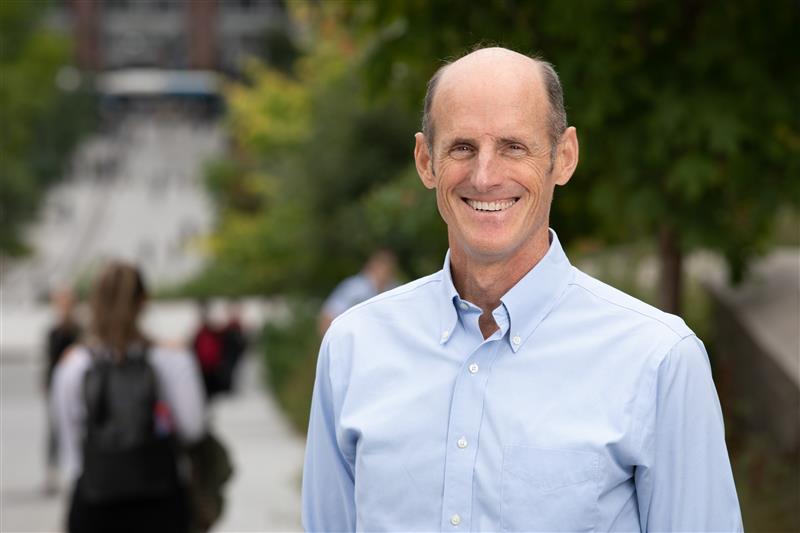
The Government of Canada announced yesterday the creation of the COVID-19 Immunity Task Force. This major two-year initiative will mobilize the country’s research capacity to measure the scope and scale of SARS-CoV-2 immunity across Canada. The ultimate aim is to provide decision makers with the best science to manage the epidemic.
Dr. David Naylor, Professor of Medicine and President Emeritus at University of Toronto, and Dr. Catherine Hankins, Professor of Public and Population Health at McGill University, will co-chair the Task Force’s leadership group.
The Public Health Agency of Canada will also support an external secretariat for the Task Force. The secretariat will be led by Dr. Timothy Evans, Associate Dean and Director of McGill’s School of Population and Global Health in the Faculty of Medicine. Dr. Evans spoke with the Reporter to discuss this unprecedented nationwide research effort.
What is serological testing?
Current tests for COVID-19 use swab samples to look for the presence of viral material to show whether an individual is infected with the virus. Serological testing is quite different because we aren’t looking for the virus, but evidence of an immune response against it. Serology uses blood tests to see whether or not a person’s immune system has reacted to infection and produced antibodies.
Why is serological surveillance important in the context of the pandemic and what do we hope to accomplish with this approach?
People who are showing COVID-19 symptoms and test positive with the swab test represent the tip of an iceberg. What we can’t see, below the surface, are the people who’ve been infected but whose symptoms have been mild or non-existent as they were not tested. Serological testing will give us a sense of just how many people make up the base of the iceberg. If the base of the iceberg is very broad, then that’s an indication many more people were infected than were diagnosed with COVID-19 using the swab tests. This information will be important in assessing population vulnerability to a second wave of the virus.
How will this help Canadians get back to work?
Serological testing will allow us to begin to look at workers who are at higher risk, such as healthcare workers, and understand how many of them have been exposed. Those individuals then can be prioritized to be on the frontline because we believe they would have a lower risk of becoming infected again. They can work more safely then without spreading infection. Other public-facing workers, such as schoolteachers, people working in stores, or people working on assembly lines could also be assessed to see if they might have some immunity. As soon as we have that information, we have a scientific basis for relaxing some of the physical distancing and social isolation interventions that have been restricting economic activity.
Why is it important for this to be a pan-Canadian effort?
We’re at the service of Canada so we will be mobilizing the research capacity of universities and public health agencies across the country. The spirit of this Task Force is to have all of these institutions come together in an unprecedented way to shed light on the level and trends of SARS-CoV-2 immunity nationwide. By having detailed data about each constituency, we’ll have quality scientific evidence that can appropriately inform policy. We want things to move quickly so that we start having an idea of the levels of seroprevalence and immunity by the end of May.
What do you expect the picture to look like?
I would expect that we’ll see very different patterns across the country. In places like Montreal and Toronto, where population is much denser, my guess is we’ll see much higher levels of immunity than in places like the Prairies, the North and perhaps the Maritimes. By understanding patterns of immunity geographically, we can start moving away from a one-size-fits-all approach to physical distancing and isolation. If we can tailor policies in accordance with immunity levels in each area, that might create some room for safely opening up critical services and sectors of the economy as well as paying more attention to particularly at-risk populations.
The Task Force will conduct surveys over the next two years. Why is it important for serological surveillance to continue after the pandemic subsides?
When you develop an immune response, it may diminish over time. If the virus cycles around again in a year or two, we need to know if the immunity we’ve developed has faded, to help protect Canadians and frontline workers. It will also help inform strategies for vaccination should a vaccine be developed.
Could the Task Force help us prepare for future pandemics with new viruses?
If this goes well and we quickly get good quality science to inform policy, then that has huge potential for mobilizing our scientific capacity in the future. It might not be through the same Task Force, but I think if we can prove that this approach has merit, we’ll have demonstrated that we can efficiently mobilize the country’s emergency research capacity, something that will be of value in the context of similar threats emerging in the future.
Learn more about how McGill researchers are tackling COVID-19
